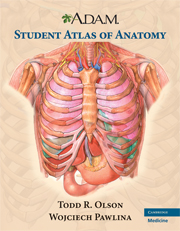PREFACE
Published online by Cambridge University Press: 05 February 2015
Summary
Although our knowledge of human anatomy has changed relatively little in the past hundred years, the teaching of anatomy in all health science professions has changed profoundly. During most of the 20th century, gross human anatomy was the principle course in the first year of medical school. Today, one hundred years later, the importance of anatomy within the curriculum has been reduced in pedagogic and temporal significance to the degree that first-year medical students spend two to three times more time studying cellular, subcellular, molecular, and biochemical processes than they do the gross structure of the human body. The major reason for this de-emphasis has been the spectacular development of bioscience technology and the resultant explosion in clinically relevant knowledge that has been incorporated into basic medical education.
Anatomists successfully responded to the challenges created by this reduction in curricular importance and time in three ways. First, and most significantly, we have largely reduced the body of knowledge covered in our courses to those aspects of anatomy that are clinically relevant and therefore of greatest potential value to the student's future clinical practice. Second, we have sifted the body of anatomical knowledge to winnow out the specialist details that must now be taught in postgraduate programs, leaving the anatomical essentials that are fundamental to the basic clinical education of every health sciences and medical student.
- Type
- Chapter
- Information
- A.D.A.M. Student Atlas of Anatomy , pp. ix - xPublisher: Cambridge University PressPrint publication year: 2008

